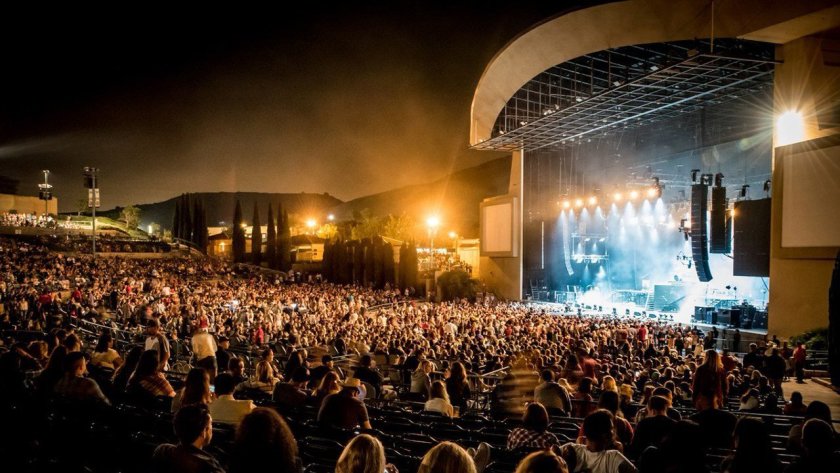For musicians and music enthusiasts alike, the COVID-19 pandemic has led to the biggest loss of our greatest pastime. Attending mass gatherings in nearby arenas, or even a local bar to witness your favorite artists take the stage, presents the greatest risk of virus transmission. Likewise, for an artist to tour the nation or abroad, they are allowing the virus to potentially take hold, thus continuing the vicious cycle.
With no foreseeable end to the pandemic, both sides are faced with a lack of live entertainment as positive cases continue to surge. A variety of disadvantages have arisen, as well as a push to recognize how deeply the music industry has suffered in the last 10 months.
A domino effect has occurred, with each aspect of the music world slowly receiving a loss in these unprecedented times.
Despite the negative outcomes, however, the music community has banded together to remain optimistic and search for alternative solutions to their current limitations.
According to The Guardian, Spotify streams of the world’s greatest hits were down 11% in April, just six weeks after lockdown orders went into full effect. After the closure of various bars, nightclubs and other venues, a need to play pre-recorded music was temporarily halted. With the continuation of these protocols, monetary losses began to increase, leaving specific venues in danger of losing their businesses.
Well-acclaimed clubs such as The Satellite in Los Angeles, California and The Mothlight in Asheville, North Carolina have succumbed to the financial stress of the pandemic, permanently closing their doors to attendees. As more clubs continue to face the risk of closure, a public outcry came in at full force.
NIVA (National Independent Venue Association), a group of over 3,000 venues from across the country, was established to seek assistance for venues, their workers and artists with the Save Our Stages Act, introduced in July of 2020.
Through this bill, the Small Business Administration (SBA) is able to make grants to eligible live venue operators, producers and talent representatives in light of the economic effects of COVID-19. For the time being, a light at the end of the tunnel remains.
In the beginning weeks of quarantine, many album releases were postponed. Artists such as The 1975, Declan McKenna and Luke Bryan pushed back their dates for several months as life was put on pause.
Despite being in isolation, many artists took advantage of the uninterrupted time, fully immersing themselves in their work. Paul McCartney has proven to be a prime example, exemplifying original lyrics and instrumentation in his newest album “McCartney III,” released in December 2020. Throughout the course of quarantine, each song was pieced together daily, with a gradual layer of various instruments building up. By the end of the year, an entire album was created, consisting of 11 unique tracks for every type of listener.
The ceasing of live events has become a burden on musicians across every age range and genre of music. In the modern pop world, Billie Eilish was forced to cancel her fifth concert tour in support of her debut album after playing only three shows in North America. Justin Bieber, having put his tickets on sale a month prior to quarantine for his “Changes” world tour, followed suit in the cancellation. Several music festivals such as Coachella and Glastonbury were cancelled for the year, as well as award shows, leaving performers no opportunity for live events.
Perhaps the biggest toll has been taken for older musicians, those executing a farewell concert, or beginning to tour after a few years hiatus. Elton John and KISS fall directly under this line, having to extend their final tours into 2021 and beyond as we continue to battle the pandemic. In addition to the aforementioned artists, hundreds of performers have suffered from the universal cancellation of 2020 tours.
For Motley Crue, a four-year breakup with no intent to reunite flipped after their announcement of a 2020 summer stadium tour. Come last spring, like most scheduled tours, it was postponed a year.
It’s only a matter of time before Motley Crue and other “classic” groups and aging artists are physically incapable of performing on stage. When the pandemic does cease, will the motivation to tour still remain? Will their health and voices be in appropriate quality to sing? The concerns are endless. It’s especially disheartening for younger fans of these artists who have a lesser chance of seeing them live, compared to older fans who have had years of opportunity.
Although a lack of safety prevents in-person gatherings, musicians have opened up their doors to broadcast virtual performances from the comfort of their homes. Singles, EPs and albums are continuing to be released after previous delays, with regards to fans continuing to remain patient and loyal to their work. Our new normal has thrived in communication, where seeing artists being personable with their fans increases their bond.
With the hardships faced by the music industry thus far, and a “normal life” barely on the horizon, continuing to interact with fans and find alternative ways to engage with performances is the greatest action that can be taken. Likewise, making use of this time to put creative energy into songs, videos and other projects will allow musicians to thrive and find an optimistic outlook in a time of uncertainty.
For questions/comments about this story, email [email protected] or tweet @TheWhitOnline.

























































































































































!["Working with [Dr. Lynch] is always a learning experience for me. She is a treasure,” said Thomas. - Staff Writer / Kacie Scibilia](https://thewhitonline.com/wp-content/uploads/2025/04/choir-1-1200x694.jpg)









































